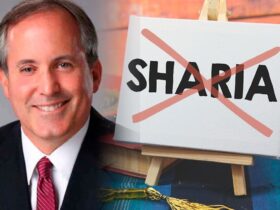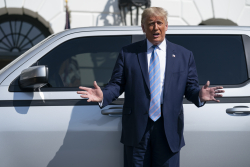Your support helps us to tell the story
From reproductive rights to climate change to Big Tech, The Independent is on the ground when the story is developing. Whether it’s investigating the financials of Elon Musk’s pro-Trump PAC or producing our latest documentary, ‘The A Word’, which shines a light on the American women fighting for reproductive rights, we know how important it is to parse out the facts from the messaging.
At such a critical moment in US history, we need reporters on the ground. Your donation allows us to keep sending journalists to speak to both sides of the story.
The Independent is trusted by Americans across the entire political spectrum. And unlike many other quality news outlets, we choose not to lock Americans out of our reporting and analysis with paywalls. We believe quality journalism should be available to everyone, paid for by those who can afford it.
Your support makes all the difference.
President Donald Trump on Thursday ordered government agencies to consolidate their wildland firefighting into a single program, despite warnings from former federal officials that it could be costly and increase the risk of catastrophic blazes.
The order aims to centralize firefighting efforts now split among five agencies and two Cabinet departments. Trump’s proposed budget for next year calls for the creation of a new Federal Wildland Fire Service under the U.S. Interior Department.
That would mean shifting thousands of personnel from the U.S. Department of Agriculture’s Forest Service — where most federal firefighters now work — with fire season already underway. The administration has not disclosed how much the change could cost or save.
Trump in his order cited the devastating Los Angeles wildfires in January as highlighting a need for a quicker response to wildfires.
“Wildfires threaten every region, yet many local government entities continue to disregard commonsense preventive measures,” the order said.
The Trump administration in its first months temporarily cut off money for wildfire prevention work and reduced the ranks of federal government firefighters through layoffs and retirement.
The order makes no mention of climate change, which Trump has downplayed even as warming temperatures help stoke bigger and more destructive wildfires that churn out massive amounts of harmful pollution.
More than 65,000 wildfires across the U.S. burned almost 9 million acres (3.6 million hectares) last year.
Organizations representing firefighters and former Forest Service officials say it would be costly to restructure firefighting efforts and cause major disruptions in the midst of fire season.
A group that includes several former Forest Service chiefs said in a recent letter to lawmakers that consolidation of firefighting work could “actually increase the likelihood of more large catastrophic fires, putting more communities, firefighters and resources at risk.”
Another destructive fire season is expected this year, driven by above-normal temperatures for most of the country, according to federal officials.
A prior proposal to merge the Forest Service and Interior to improve firefighting was found to have significant drawbacks by the Congressional Research Service in a 2008 report.
But the idea more recently got bipartisan support, with California Democratic Sen. Alex Padilla and Montana Republican Sen. Tim Sheehy sponsoring legislation that is similar to Trump’s plan. Before his election last year, Sheehy founded an aerial firefighting company that relies heavily on federal contracts.
In a separate action aimed at wildfires, the Trump administration last month rolled back environmental safeguards around future logging projects on more than half U.S. national forests.
The emergency designation covers 176,000 square miles (455,000 square kilometers) of terrain primarily in the West but also in the South, around the Great Lakes and in New England.
Most of those forests are considered to have high wildfire risk, and many are in decline because of insects and disease.
















Leave a Reply